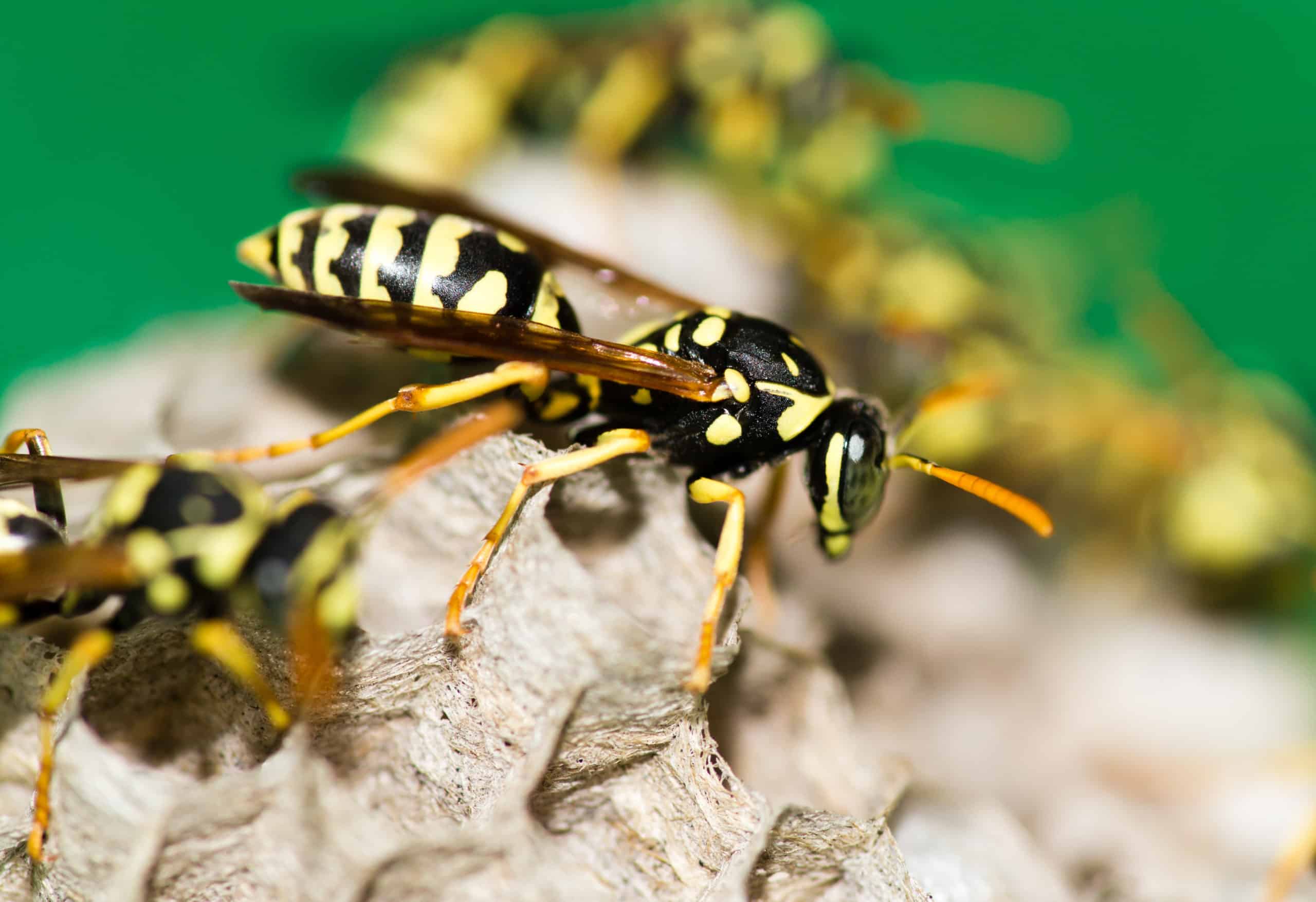
While wasps all belong to the same family of stinging insects, their own internal colonial structures and habits can vary quite a bit, and by simply looking at their nests, you can easily tell some of them apart.
Paper Wasp Nests
These nests are typically constructed under decks, or on the eaves of a home. They are shaped like umbrellas with hexagonal cells facing downward.

Hornet Nests
Hornets tend to make their nests on large trees or along the siding of a home. These nests are much larger than their paper wasp counterparts and are often shaped like a large football. The outer walls of the nest appear smooth and overlap one another with openings at various heights along these structures, creating caverns into the nest.
Yellowjacket Nests

If you don’t see a large nest on its own, you may be dealing with yellowjackets. These flying pests prefer to burrow into the ground or slip into cracks in the outer walls of your home. They build their nests inside these other structures, creating hidden hives. The best sign that you are dealing with yellowjackets as opposed to another type of wasp, is by observing the insects darting into the ground and along walls, never congregating around a perch where a nest might be in the process of being built.
Populations
The amount of wasps that each nest is able to carry varies quite drastically. In the case of paper wasps, their colonies can be quite small with a population of under 100 individuals in one nest. Conversely, some yellowjacket nests can accommodate a couple thousand members.
Citations
Wasp Nests and Bee Hives (2016) SciShow. YouTube. Available at:
https://www.youtube.com/watch?v=kFpLsSwnrNQ (Accessed: April 2020).
A Simple Guide to Preventing Stinging Pests
A Simple Guide to Preventing Stinging Pests A Simple Guide to Preventing Stinging Pests Summary: Stinging insects are more active in warm weather, [...]
These 10 Natural Mosquito Repellents Can Actually Help
These 10 Natural Mosquito Repellents Can Actually Help These 10 Natural Mosquito Repellents Can Actually Help Summary: Natural mosquito repellents are easier to [...]
How to Get Rid of Carpet Beetles
How to Get Rid of Carpet Beetles How to Get Rid of Carpet Beetles Summary: Carpet beetles are sneaky pests that don’t usually [...]
How Do Roaches Affect Asthma and Allergies?
How Do Roaches Affect Asthma and Allergies? How Do Roaches Affect Asthma and Allergies? Summary: It’s no secret that pests impact human health, [...]
These 5 Carnivorous Pests Might Surprise You!
These 5 Carnivorous Pests Might Surprise You! These 5 Carnivorous Pests Might Surprise You! Summary: There are many eco-friendly ways to prevent pests, [...]
The 5 Pet Pests That Really Bug Dogs and Cats
The 5 Pet Pests That Really Bug Dogs and Cats The 5 Pet Pests That Really Bug Dogs and Cats Summary: Dogs and [...]

